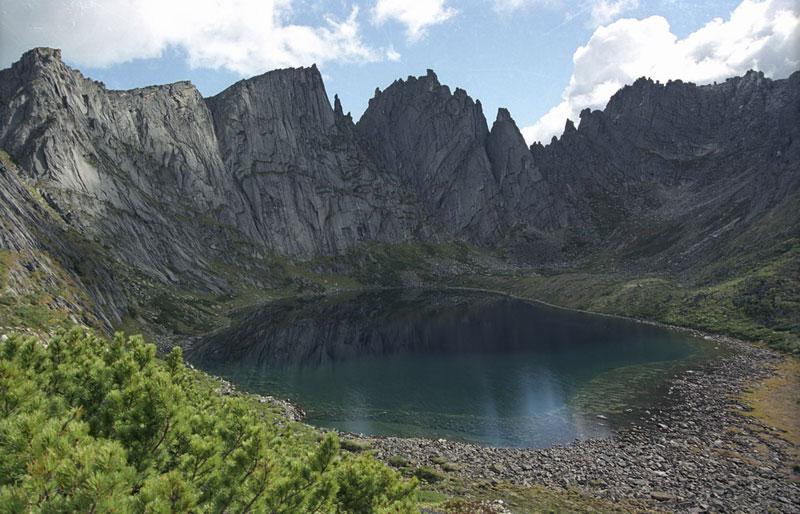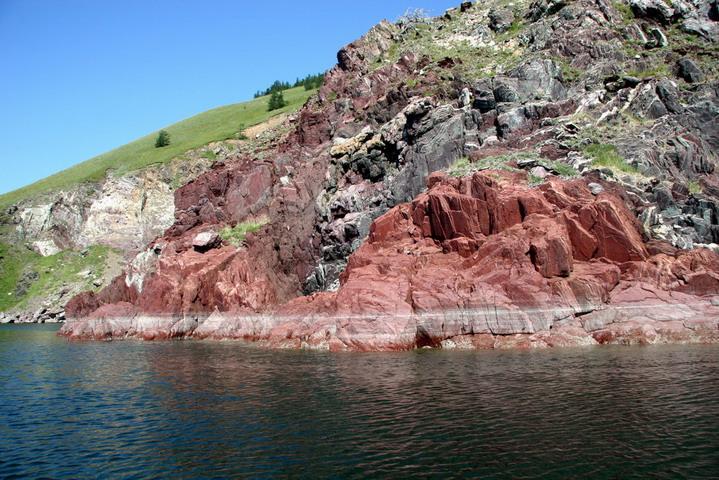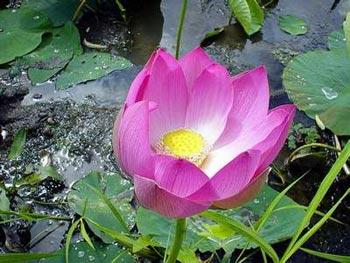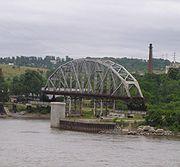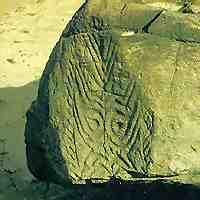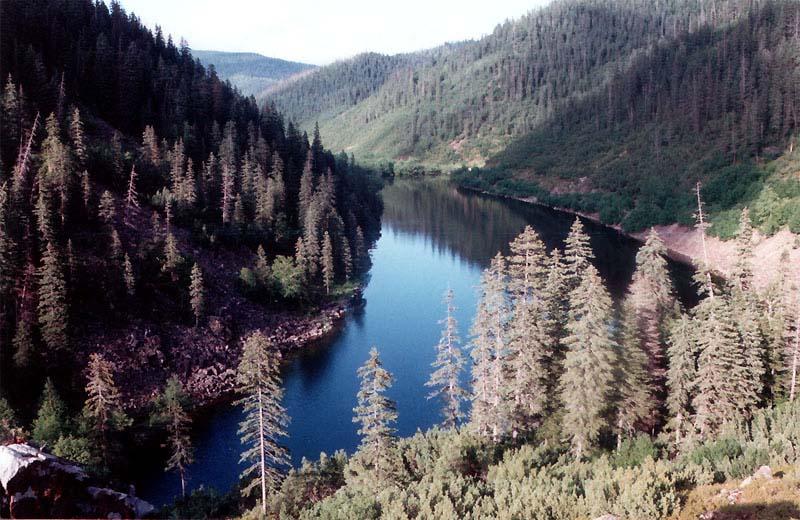
- •Сontents
- •Введение
- •Introduction
- •Unit I. Introductory part
- •1. Fill in the table:
- •2. Study the key vocabulary:
- •3. Scan the text. Political Situation in Russia in the 17th Century and Prerequisites for the Exploration of the Far East
- •4. Answer the following questions:
- •5. Complete the sentences:
- ••Moscow was occupied by ___________________________ .
- •Unit II. Movement to the far east Lesson 1. Expeditions of Ivan Moskvitin and Vasily Poyarkov
- •2. Study the key vocabulary:
- •3. Make up sentences with the key vocabulary.
- •4. Complete the sentences with the correct key vocabulary item:
- •5. Translate into English:
- •7. Scan the table. Analyze the peculiarities of the expeditions. What differences and similar features have you found?
- •9. Explain the meaning of the following expressions from the text.
- •Lesson 2. Yerofey Pavlovich Khabarov: a Successful Commercial Man and “Getter” of Russia
- •1. History test. Choose the correct variant to complete the sentences:
- •2. Read the text and explain the meaning of the word “khabar”. What does the word “khabar” mean?
- •3. Study the key vocabulary:
- •4. Match the following word-combinations with their definitions:
- •5. Make up sentences with the key phrases.
- •6. Scan the table. The Most Important Periods of y. P. Khabarov’s Biography
- •11. Find out about his Amur trip. What other trips did he undertake?
- •12. Explain why his way was shorter and better. Use maps.
- •13. Translate into Russian. Which natural riches of the Far East was Khabarov impressed by?
- •14. On your own. Use the Internet and other resources to find information about the character of y.P.Khabarov. Prove that he was a successful Russian commercial man.
- •15. Read the text and analyze all achievements of y. P. Khabarov. Explain why historians name him the “getter” of Russia.
- •Importance of Khabarov’s discoveries
- •16. Say what impressed you most in Khabarov’s fate.
- •17. Imagine you are a guide-interpreter. Make a presentation about the monument to y. Khabarov. Use the information from the text.
- •Vocabulary:
- •18. Write an essay on the following theme: “The city of Khabarovsk was named so because …”.
- •1. Study the key vocabulary:
- •2. Replace the following words and word-combinations by the synonyms:
- •3. Make up the sentences with the key vocabulary.
- •4. Scan the text and translate into Russian the sentences with the key vocabulary. Semеn Ivanovich Dezhnev
- •5. Answer the following questions:
- •6. Complete the sentences:
- •7. True or false? Write “t” if true, “f”, if false:
- •Part II
- •Vladimir Vasilyevich Atlasov
- •5. Prove that:
- •6. Answer the following questions:
- •7. Fill in the table:
- •8. Look at the map. Speak how the territory of Russia changed in the 17th century due to expeditions of famous Russian explorers.
- •9. Make a presentation about one of five famous explorers of the Far East.
- •1. Study the key-vocabulary:
- •2. Replace the following words and word-combinations by the synonyms:
- •3. Fill in the correct key word or word-combination:
- •3. Make up the sentences with the key vocabulary.
- •4. Scan the text and translate into Russian the sentences with the key vocabulary. Albazin Fortress
- •Lesson 5. Fatal Consequences of the Nerchinsk Treaty
- •Нерчинский трактат
- •9. Replace the following words and word-combinations by the antonyms:
- •10. Complete the following sentences with the correct key word or word-combination:
- •11. Make up the sentences with the key vocabulary.
- •12. Scan the text. Political Situation in the Far East
- •13. Look at the picture by a Chinese artist: “a battle for Albazin between Russian Cossacks and Daurs”. Explain what you see there.
- •14. Answer the following sentences:
- •Unit IV. Peter’s age in the far east
- •Alexey Mikhailovich and Nataliya Naryshkina
- •Alexey Mikhailovich and Maria Miloslavskaya
- •Lesson 6. Development of the Far Eastern Lands by Peter I
- •1. Study the key vocabulary:
- •2. Complete the following sentences with the correct key word or word-combination:
- •3. Translate into English:
- •4. Make up the sentences with the key vocabulary.
- •5. Scan the text. Achievements of Peter I in the Far East
- •6. Answer the following questions:
- •Lesson 7. Okhotsk: the Major Russian Port in the Pacific
- •6. Scan the text. Okhotsk Foundation
- •Lesson 8. Expeditions of Vitus Bering
- •4. Translate into English:
- •5. Scan the text.
- •Vitus Bering
- •6. Answer the following questions:
- •7. Complete the following sentences:
- •9. Translate into Russian:
- •10. Find on map №12 the places:
- •12. Give a summary of V. Bering’s life. Lesson 9. The First Steps to Explore the American Coast
- •1. Study the key vocabulary:
- •2. Explain the meaning of the following key vocabulary:
- •3. Match the words and word-combinations with their definitions:
- •4. Make up sentences with the key vocabulary.
- •5. Translate the sentences into Russian:
- •6. Scan the text. Problems with the Locals during the First Steps to Explore the American Coast
- •6. Answer the following questions:
- •Unit V. Russian america Lesson 10. Political Situation in the Pacific at the End of the 18th Century
- •Influenced the appearance of the new indigenous peoples in America.
- •2. Study the key vocabulary:
- •3. Match the following columns:
- •4. Translate into English:
- •5. Make up sentences with the key vocabulary.
- •6. Scan the text. Russian and American Frontiers
- •7. Answer the following questions:
- •8. Find in the text the sentences with the key vocabulary and translate them into Russian.
- •9. Complete the sentences:
- •Lesson 11. Functions of Russian Trade Stations on the American Shores
- •2. Replace the following words and word-combinations by the synonyms:
- •3. Match the following columns:
- •4. Find the words from the key vocabulary to match the following definitions:
- •5. Make up sentences with the key vocabulary.
- •6. Scan the text. Grigory Ivanovich Shelikhov – the Founder of Russian Business in NorthAmerica
- •7. Answer the following questions:
- •8. Write if the statement is true (t) or false (f):
- •Lesson 12.The Work of the Russian-American Company (rac)
- •Основание Российско-Американской компании
- •Vocabulary:
- •7. Make up the sentences with the key vocabulary.
- •8. Scan the text. The First Russian Joint-stock Commercial Enterprise in America
- •9. Answer the following questions:
- •16. Give a summary of the text.
- •17. A) Scan the table of persons who were the Governors of the Russian American Company. B) Find on map №16 places named by them. Governors of the Russian American Company
- •Lesson 13. Reforms of Nikolay Petrovich Rezanov in Russian America
- •1. Study the key vocabulary
- •9. Answer the following questions:
- •10. Write if the statement is true (t) or false (f):
- •Lesson 14. Decline of the rac and Sale of Russian Estates in America
- •2. Replace the following words by the antonyms:
- •6. Scan the text. Why Were the Colonial Possessions of Russian America Sold?
- •7. Answer the following questions:
- •8. Prove that the territory of Russian America was practically uninhabited.
- •11. Complete the sentences:
- •Исторические факты
- •Vocabulary:
- •Популярные мифы и заблуждения о продаже Аляски
- •1.Утверждается, что в связи с известными нарушениями договора, сделка может быть оспорена и по сей день.
- •3.В российской публицистике распространяется еще один миф, который гласит, что Аляска на самом деле была не продана, а сдана в аренду на 99 лет, но ссср по каким-то причинам не потребовал её обратно.
- •Vocabulary:
- •16. Read the newspaper article. Share your point of view about the perspectives of Russian-American business relations. From Russia with Love: Tunnel to Link Siberia and Alaska
- •Vocabulary:
- •1. What do you know about the settlement of the Amur area in the 19th century? Choose a correct answer to complete a sentence.
- •2. Study the key vocabulary:
- •3. Replace the following words with the synonyms:
- •7. Scan the text. Return of Russia to the Amur
- •7. Answer the following questions:
- •8. Complete the sentence:
- •Lesson 16. Important Discoveries of Captain Gennady Ivanovich Nevelskoy
- •3. Complete the sentences with the word or word-combinations from the key vocabulary :
- •4. Make up sentences with the key vocabulary.
- •5. Scan the text. The Life and Activities of the “Amur Admiral” Gennady Ivanovich Nevelskoy
- •6. Answer the following questions:
- •7. Translate into Russian the sentences with the key vocabulary.
- •8. Think why the first Russian ports at the Amur estuary and Sakhalin were named as Petrovsky, Nikolaevsky, Ilyinsky and Muravyovsky.
- •9. Say if the statement is true (t) or false (f):
- •10. Scan map №17. Describe the rout of the expedition of Captain g.I. Nevelskoy.
- •11. Translate an extract below. Explain what g.I. Nevelskoy guaranteed to the local population.
- •Vocabulary:
- •12. Fill in the table about the life and discoveries of Gennady Ivanovich Nevelskoy:
- •Lesson 17. The Activities of the Governor - General Nikolay Nikolaevich Muravyov- Amursky during His Reign in the Far East
- •2. Replace the word-combinations by the key vocabulary:
- •3. Match the following columns:
- •4. Make up sentences with the phrases from ex.3.
- •5. Scan the text. Nikolay Nikolaevich Muravyov-Amursky* - a Great Reformer of the Russian Far East
- •6. Answer the following questions:
- •7. Translate the sentences with the key vocabulary into Russian.
- •8. Complete the sentences:
- •Lesson 18. The First Raftings of the Russian People down the Amur River
- •5. Scan the text: Measures to Consolidate and Secure the Far East
- •6. Answer the following questions:
- •7. Translate into Russian sentences with the key vocabulary.
- •8. Complete the following sentences:
- •Дважды открытый
- •Lesson 19.Difficult Life of the First Russian Settlers
- •Амурское казачье войско
- •2. Study the key vocabulary:
- •2. Replace the following words by the antonyms:
- •3. Match the following columns:
- •4. Complete the sentence:
- •5. Make up sentences with the key vocabulary.
- •6. Scan the text. Difficult Life of the First Russian Settlers
- •6. Answer the following questions:
- •A) Описание жизни первых переселенцев Николаем Михайловичем Пржевальским
- •Vocabulary:
- •B) The “World's End” Lost in Taiga
- •1. Study the key vocabulary:
- •2. Replace the following words by the synonyms:
- •3. Make up sentences with the key vocabulary.
- •4. Complete the sentences:
- •5. Scan the text: Demand, Design and Importance of the Trans-Siberian Railway*
- •6. Answer the following questions:
- •17. Scan the articles. Prove that these educational institutions played an important role in the designing the Trans-Siberian railway. A)Khabarovsk Railway College of the Ministry of Railways
- •Far Eastern State Transportation University
- •18. Read the text. Speak about the importance of the Amur Bridge for the Far East. Amur Bridge
- •1. Study the key vocabulary:
- •2. Match the following columns:
- •3. Make up sentences with the phrases from exercise 2.
- •4. Translate into English:
- •5. Scan the text: Prerequisites for the Rapid Growth and Decay of Some Far Eastern Territories
- •6. Answer the following questions:
- •7. Translate into Russian the sentences with the key vocabulary.
- •8. Complete the following sentences:
- •The First Freemen of Khabarovsk
- •17. On your own. Use the Internet and other sources to make a list of the most popular honorable citizens of modern Khabarovsk.
- •18. A)Scan the text: Merchants’ Khabarovsk
- •19. Read the text. Династия Плюсниных
- •Vocabulary:
- •Vocabulary:
- •Николай Иванович Тифонтай
- •Vocabulary:
- •Торговый Дом «Кунст и Альберс»
- •Vocabulary:
- •Lesson 22. Contribution of Governors-General to the Development of the Far Eastern Lands
- •Protected person b) maker of somebody’s ideas in reality c)successor
- •5. Scan the text: General - Governorship in the Far East
- •6. Answer the following questions:
- •6. Speak about the Governors-General of Eastern Siberia.
- •7. Study the table. Which Governors-General are familiar to you? Why?
- •8. Explain why the initials of some Governors-General are italicized.
- •9. Read the article about Nikolay Ivanovich Grodekov. Nikolay Ivanovich Grodekov (1843 – 1913)
- •Andrey Nikolayevich Korf (1831-1893)
- •14. Prove that Andrey Nikolayevich Korf was a worthy person and had not got the title of the Honorable Citizen of Khabarovsk in vain.
- •15. Write the translation of the text. Николай Львович Гондатти (1863—1945)
- •Lesson 23. Main Discoveries of Russian Scientists in the Far East
- •In the 19th –20th Centuries
- •Activity of the Priamurskiy Department of the Imperial Russian Geographic Society
- •6. Answer the following questions:
- •7. Translate into English. Исследование Сибири и Дальнего Востока
- •8. Speak about the importance of the scientific research for the development of the Far East.
- •9. Scan the texts. Richard Karlovich Maack (1825-1886)
- •Alexander Fedorovich Middendorf (1815–1894)
- •Karl Ivanovich Maximowicz (1827 - 1891)
- •Plants named after Maximowicz
- •Vladimir Klavdievich Arsenyev (1972 - 1930)
- •Arsenyev’s family home in Vladivostok has been made into a museum. The town of Arsenyev, located in Primorskiy Territory, was named after him. Dersu Uzala
- •Венюков Михаил Иванович (1832-1901)
- •11. Make up a table of scientific discoveries in the Far East.
- •1. Scan the text. The History of Khabarovsk
- •5. Give a key sentence to each paragraph and retell the text.
- •Герб города Хабаровска
- •Vocabulary:
- •11. Have a look at photos of old Khabarovsk on pages 163-171. Can you guess which modern buildings are these?
- •12. Make a presentation or a slide-show about several old and modern buildings of Khabarovsk. Compare them and tell about differences.
- •Lesson 25. The Importance of the Amur River for the Region
- •1. Scan the Statistical Data. Name the peculiarities of the Amur River. Statistical Data:
- •2. Study the key vocabulary:
- •3. Match the following columns:
- •4. Make up sentences with the word-combinations from ex.3.
- •5. Translate into English:
- •6. Scan the text: Amur River History
- •Economy of the Amur Basin
- •Major Amur tributaries are:
- •7. Answer the following questions:
- •8. Translate sentences with the key vocabulary into Russian.
- •9. Write all meanings of the word “Amur”:
- •10. Write the main dates of the Amur history and explain the events:
- •11. Speak about the history of the Amur River.
- •12. Fill in the table about the resources of the Amur River:
- •13. Watch map in the text and map №23. Determine the location of the the Amur River, its tributaties, and cities, located on its banks.
- •14. Read the articles.
- •Viktor Ishayev: “China Threatens Khabarovsk Region with New Ecological Catastrophe”
- •Китай пообещал закрыть все угрожающие загрязнением Амура заводы
- •Amur Needs un Clean-up Aid
- •15. Analyze the articles and make a list of main ecological problems of the river and measures to solve them.
- •16. Write an essay on the following topic:” Father Amur is the River of life in the Far East”. Lesson 26. Far Eastern Federal District
- •1. Scan the information.
- •Statiscical Data:
- •4. Speak about the presence of the Chinese at the Territory of the Far East. Is their presence here really dangerous?
- •5. Read the text. Khabarovsk Territory
- •Description of the flag of Khabarovsk Territory
- •Description of the Coat of Arms of Khabarovsk Territory
- •History
- •Geography
- •Economy
- •Demographics
- •Places Attractive for Tourists
- •Welcome to the Russian Far East!
- •10. Write an essay on the following theme: “What will happen to the Far East in 20 years?”
- •Vocabulary list
- •Appendix
- •Map № 8. Stanovoy Range
- •Map № 16. Russian America
- •Seminar № 2
- •Seminar № 3
- •Old buildings of khabarovsk
- •Reference sources
- •Www.Wikipedia.Org
History
According to various Chinese and Korean records, the southern part of Khabarovsk Territory was originally occupied by one of the five semi-nomadic Shiwei tribes and the Black Water Mohe tribes living in the west and the east of the Bureinsky and Malyi Khingan ranges.
Research history of the Russian Far East began with Ivan Moskvitin and ended Nikolay Muravyov - Amursky, who returned the lower reaches of the Amur River back to our country and granted Russia free access to the Pacific Ocean.
Geography
Khabarovsk Territory shares its borders with Magadan Oblast in the north, Sakha Republic and Amur Oblast in the west, Jewish Autonomous Oblast, People's Republic of China, and Maritime Territory in the south, and is limited by the Sea of Okhotsk in the east.
It is the fourth-largest federal district within the Russian Federation, with a comparative land area slightly larger than the U.S. state of Texas. Taiga and tundra in the north, swamp forests in the central part, and deciduous forests in the south are the natural vegetation in the area.
Economy
Khabarovsk Territory is the most industrialized territory of the Far East of Russia, producing 30% of the total industrial products in the Far Eastern Economic Region. The machine construction industry consists primarily of a highly developed military-industrial complex of large scale aircraft and ship building enterprises.
Komsomolsk-on-Amur Aircraft Production Association is one among territorial most successful enterprises, and for years has been the largest taxpayer.
Other major industries include timberworking and fishing, along with metallurgy in main cities, although the territorial own mineral resources are poorly developed. Komsomolsk-on-Amur is the iron and steel center of the Far East; a pipeline from northern Sakhalin supplies the petroleum-refining industry in Khabarovsk.
In the Amur basin, there is also some cultivation of wheat and soybeans. The capital city, Khabarovsk, is at the junction of the Amur River and the Trans-Siberian railway, so it is the largest transport hub in the Far East.
Demographics
According to the 2002 census, 89.8% of the population are Russians, 3.4% Ukrainians, 0.77% Nanais, 0.76% Tatars, 0.66% Koreans, and 0.62% Belarusians. In addition to the Nanai, other indigenous groups include the Evenks and Evens in the north, and Ulchi in the lower Amur River (Ulchsky District). Some Nivkhs (Gilyaks), speaking isolate language, live around the Amur River delta as well. Smaller indigenous groups of the area are Negidals (567), Orochs (686), and Udege (1,657).
Rural locations of Khabarovsk Territory had positive natural growth of population in 2008 (for the first time during the last 16 years).
Places Attractive for Tourists
Tourism is considered to be one of basic industries of economy. Each region of Russia has its own peculiarities interesting for home and foreign visitors. Khabarovsk Territory boasts lots of such peculiarities. In autumn of 2008 Khabarovsk mass media announced the contest of seven miracles of Khabarovsk Territory. 15, 000 persons took part in this contest. They suggested 26 places to take part in this competition. But only seven of them became the winners. Among them are:
|
|
Amur Tiger Many times ago the Amur tiger's range included China, Korean peninsula, Khabarovsk Territory and Primorie Territory. Today the main population of the Amur tigers can be found to the Northeast in the Sikhote Alin mountain range. The Amur tiger population in Russia is about 450 animals. From year to year its number decreases. It is registered in Red Data Book. |
|
|
Dusse-Alin mountain range
This “lost world” is located in the middle of Khabarovsk region. As in Conan Doyle’s novel, this is a remote mountain plateau, home to a land hidden from human eyes: crystal-clear lakes, beautiful water-falls and unique wildlife.
|
|
|
Shantar Islands A group of fifteen islands that lie in Uda Bay, in the southwestern zone of the Sea of Okhotsk. These islands are located close to the shores of Siberian mainland. Most islands have rugged cliffs, but they are of moderate height; the highest point in the island group is 720 metres. There is no permanent population on the Shantar Islands. The islands are currently uninhabited. |
|
|
Lotuses This unique plant grows in several lakes in the south of Khabarovsk region and flowers for just a few days. In order to see the lotus blossom, tourists venture into woods and walk up to their knees in water. The lotus, one of the world’s oldest plants, is an object of worship in many parts of Asia.
|
|
|
Amur Bridge See Unit VII, Lesson 19. |
|
|
Sikachi-Alian petroglyphs Near the Nanai village of Sikachi-Alian, in 75 kilometers off Khabarovsk there are petroglyphs of masks, animals, anthropomorphic images, birds (over 300 images) made on basalt rocks by the method of deep gutter knock-out. Most ancient of them are dated by Late Stone Age (7-6 millennium B.C.). Sikachi-Alian petroglyphs are older than Egypt Pyramids. |
|
|
Amut lake It is located in Solnechny area. The nearest settlement is the settlement of Gorny. The length of the lake is 960 m, width - 520 m, depth - 18 m. Beautiful landscape and possibility to get there by bus and car transport can give start to development of recreational, cognitive, ecological and scientific tourism in this place. |
6. Describe the flag and coat of arms of Khabarovsk Territory.
7. Discuss 7 Miracles of Khabarovsk Territory. Why did people elect them among other 26?
8![]() .
Watch map № 24. Describe the location of Khabarovsk Territory.
Prove that it is very convenient for the development of economy.
.
Watch map № 24. Describe the location of Khabarovsk Territory.
Prove that it is very convenient for the development of economy.
9. Translate into Russian.


